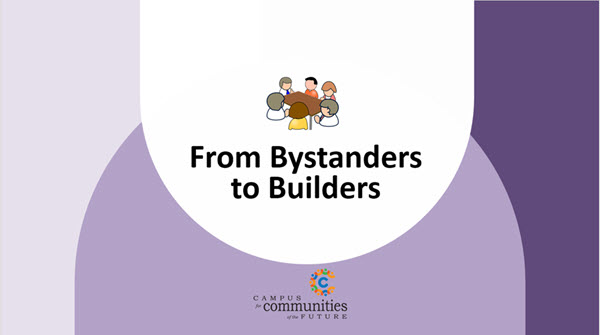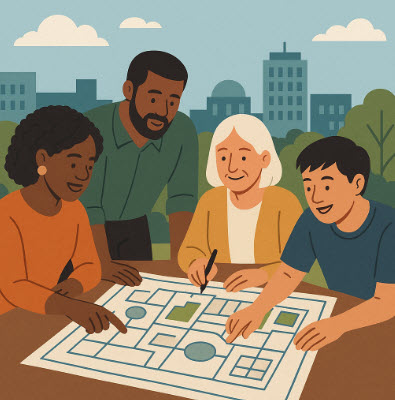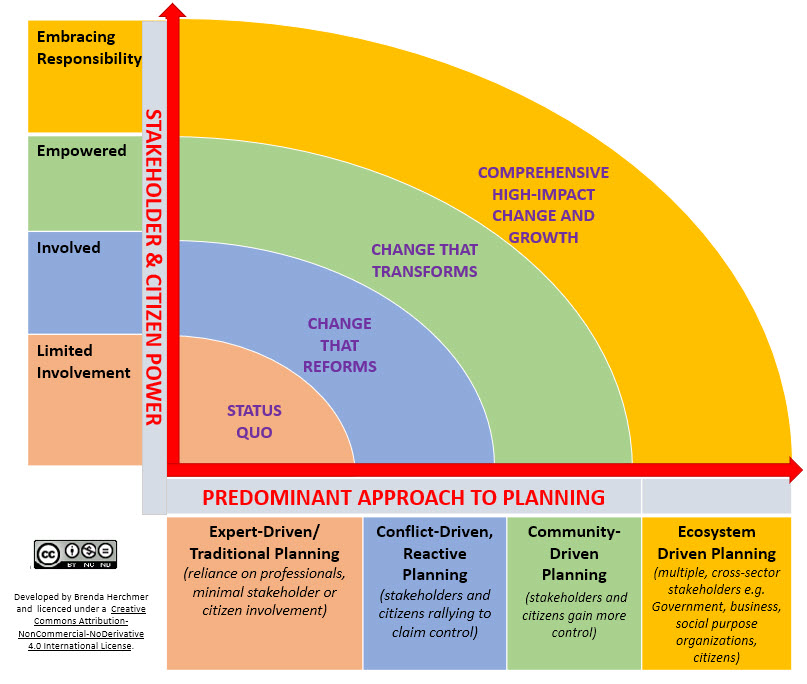From Bystanders to Builders: How to Shift the Power In Community Planning

Many municipal elected officials and staff are doing their best to engage residents in local planning and decision-making. The problem is that often only a limited number of residents typically respond, so elected officials and senior staff throw up their hands. They’re pretty sure it’s not their fault, but they remain at a loss as to why people aren’t jumping to provide feedback when given the opportunity.
A recent post by a city resident perhaps explains it best: “Why bother? They’ve already decided what they’re going to do.” While that sentiment is sometimes justified, the intention behind engaging citizens in local decision-making is a good one.
People who live, work, and play in the community are often the true experts regarding what is and isn’t working. They know what needs to be fixed, bring fresh ideas for innovation, and understand how local strengths can be leveraged. Perhaps most critically, engaging residents helps identify and build consensus for initiatives to strengthen social, economic, environmental, and cultural well-being.

Beyond consensus, residents also have a practical understanding of how actions can be mobilized, especially when these actions are framed within global priorities, such as the UN’s 17 Sustainable Development Goals (SDGS).
Today’s complex issues and opportunities require the collective wisdom of citizens, government, social purpose organizations, and businesses to generate transformative, innovative, and sustainable solutions.
The Need for a Cultural Shift
Meeting these challenges requires a cultural shift, grounded in two distinct principles:
Empowering Stakeholders: Elected officials, consultants, and senior staff must be willing to empower citizens and other stakeholders to make decisions. This empowerment goes beyond rhetoric; it means providing citizens with the information and tools they need to collaborate and make informed choices.
Adopting Community-Driven Approaches:
A community-driven approach to planning is essential. In most cases, applying a whole or complete community approach is even more impactful, ensuring that diverse voices are included and that solutions are holistic.
The intention to engage citizens in local decision-making is essential for addressing today’s local and global complexities. Achieving this will require both unlearning old habits and embracing new learning and approaches.
Clarifying Planning Types
The graphic below clarifies the different types of planning approaches and how power is shared in each. Over many years working with 60+ communities across Canada, it has become clear that the way planning is approached and who holds decision-making power significantly affect outcomes.
As illustrated in the graphic, community-driven and ecosystem planning approaches consistently outperform expert-driven or conflict-driven planning when it comes to motivating, mobilizing, maximizing, and maintaining community growth, change, and innovation.
By understanding and adopting the most effective planning types, municipalities can better engage their residents and achieve more sustainable, inclusive progress.
Note: The different types of planning referenced in this post are explained in detail in the accompanying graphic. For readers unfamiliar with terms like “community-driven,” “ecosystem planning,” or “expert-driven planning,” please refer to the graphic for definitions and a visual comparison of how power is distributed in each approach. Colour coding and clear labels in the graphic further distinguish each planning type for quick reference.

Next entry: Staying Ahead of the Curve
Previous entry: ECOSYSTEMS OF CHANGE: Unleashing Community Power for Systems Innovation

 Brenda Herchmer is the owner of Grassroots Enterprises, a community development consulting company.
Brenda Herchmer is the owner of Grassroots Enterprises, a community development consulting company.